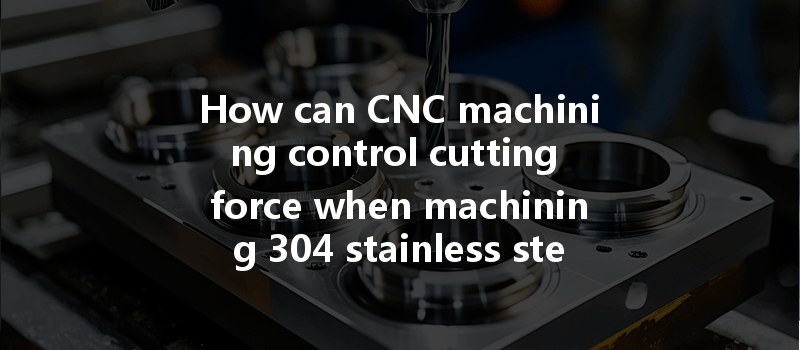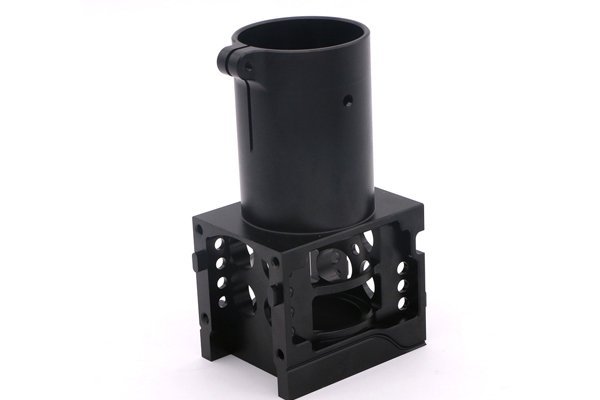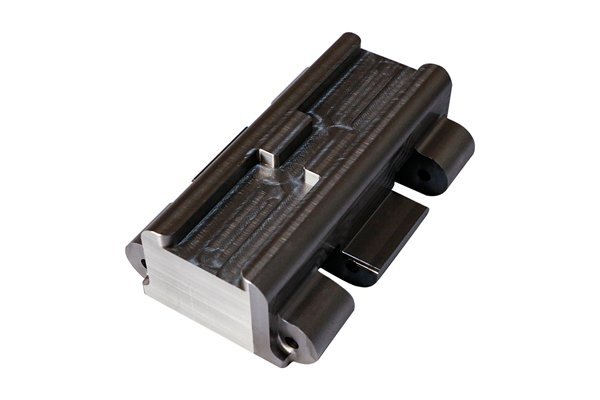Did you know that stainless steel is one of the most widely used metals in the world, accounting for around 25 million tons of production annually? Due to its remarkable strength, durability, and resistance to corrosion, stainless steel is an essential material in various industries, such as aerospace, automotive, and medical devices. Among the various types of stainless steel, 304 stainless steel—known for its versatile properties—is a favorite for many CNC machining applications, especially in creating intricate parts.
This blog will delve into an essential question: how can CNC machining effectively control cutting force when machining 304 stainless steel? The focus will be to provide comprehensive solutions and techniques while exploring the interrelated aspects of cutting force control that can significantly enhance machining performance.
Understanding CNC Machining and Cutting Force
What is CNC Machining?
CNC (Computer Numerical Control) machining is a manufacturing process that uses computer-controlled machines to create parts and components from various materials. It relies on pre-programmed software that drives machinery to perform precise cutting, milling, drilling, and turning operations.
The Significance of Cutting Force in CNC Machining
Cutting force is a critical parameter in CNC machining, impacting the quality of the finished product, tool wear, machining stability, and overall efficiency. It refers to the force applied by the cutting tool to convert raw material into the desired shape. High cutting forces can lead to excessive tool wear, suboptimal surface finish, and even tool breakage, while low cutting forces might result in insufficient material removal and sluggish processing times.
The Challenges of Machining 304 Stainless Steel
304 stainless steel is a tough material with a high work-hardening rate. Here are some challenges when machining this specific type of stainless steel:
In light of these challenges, controlling cutting force becomes vital to achieving optimal results when machining 304 stainless steel.
Strategies for Controlling Cutting Force During CNC Machining of 304 Stainless Steel
Choice of Material: The material composition of cutting tools significantly affects cutting force. For machining 304 stainless steel, carbide cutting tools are often preferred due to their hardness and resistance to wear.
Tool Geometry: The geometry of the cutting tools—such as rake angle, clearance angle, and point angle—can be tailored to improve cutting efficiency. For instance, increasing the rake angle can reduce cutting force by enhancing chip flow away from the cutting edge.
Cutting Speed: The cutting speed should be optimized based on the specific machining conditions and the characteristics of 304 stainless steel. Higher cutting speeds typically lead to reduced cutting forces, but they can also increase wear on the tooling. A balance must be struck based on the application.
Feed Rate: Adjusting the feed rate influences the cutting force significantly. A higher feed rate generally increases cutting force but can also result in a rougher surface finish. By finding the optimal feed rate for a specific operation, machinists can control cutting forces effectively.
Depth of Cut: Modifying the depth of cut affects the volume of material being removed. A shallower cut can reduce cutting force and tool wear, whereas deeper cuts may expedite production but increase forces. Effective balancing is critical here.
Coolant Usage: Implementing a cooling system is vital when machining stainless steel. Flood cooling with water-soluble oils or synthetic coolants can reduce the heat generated during machining, thus preventing thermal damage to both the tool and workpiece.

Lubrication: Utilizing lubricants effectively can minimize friction at the cutting interface, which translates to reduced cutting forces. The adoption of minimum quantity lubrication (MQL) systems is an emerging trend in CNC machining, striking a balance between effective lubrication and environmental considerations.
Vibration Control: High cutting forces can lead to vibration, which negatively impacts machining accuracy and tool life. Utilizing vibration-damping equipment, ensuring proper machine setup, and adopting cutting techniques that reduce vibration can enhance machining performance.
Stability of Workpiece Setup: Securely clamping the workpiece ensures that cutting forces are directed effectively and prevents movement and chatter that can exacerbate variations in cutting forces. Utilizing advanced fixturing solutions can provide stability.
Tool Inspection: Regularly inspecting and maintaining tools can reduce variability in cutting forces. Dull tools can increase cutting forces, possibly leading to tool failure or excessive roughness.
Cutting Force Sensors: Some CNC machines incorporate sensors to measure cutting forces in real time. By integrating advancements in technology like digital monitoring systems, operators can make immediate adjustments based on feedback from the machining process.
Operator Training: Continuous training and knowledge updates for operators can significantly affect machining practices. Educating technicians on material properties, cutting dynamics, and machine setups fosters a culture of precision and care, ultimately contributing to stable cutting force management.
Continuous Improvement Processes: Adopting a philosophy of continuous improvement, including revisiting machining strategies, remaining informed about advancements, and adjusting processes based on past experiences, can drive improvements in cutting force control.
Future Directions in CNC Machining of 304 Stainless Steel
The landscape of CNC machining is rapidly evolving, with technology and materials science continuously advancing. Here are some trends that could influence cutting force control in the future:
Incorporating artificial intelligence and machine learning into CNC machining processes can enable systems to “learn” optimal cutting parameters based on past performances, significantly enhancing cutting force control while minimizing human error.
Research into novel cutting tool materials and coatings, including diamond-like carbon (DLC) and coatings that reduce friction, could result in tools better suited for high-performance cutting of stainless steel.
As automation continues to permeate manufacturing, robotic solutions for CNC machining could provide more precise control over all machining parameters, including cutting forces, leading to enhanced operational efficiency and product quality.
Controlling cutting force during CNC machining of 304 stainless steel is multifaceted, requiring a thorough understanding of materials, tools, and machining techniques. By selecting appropriate cutting tools, optimizing parameters, effectively managing cooling and lubrication, monitoring machinery, and providing operator training, you can achieve remarkable results and enhance the overall machining process.
The ability to control cutting force is crucial in not only ensuring part quality but also extending tool life and improving operational efficiency. As the manufacturing landscape continues to evolve, focusing on these elements becomes increasingly vital for businesses competing in a global market.
Ultimately, keeping abreast of technological advancements and trends will position you to tackle the challenges of machining with confidence. In understanding and implementing these core techniques, you can enhance your CNC machining operations—crafting high-quality components consistently while controlling costs effectively.
In an industry where every cut counts, mastering the art of controlling cutting forces may just be the differentiator you need for long-term success.






